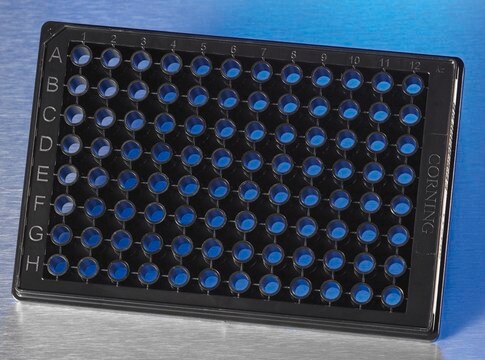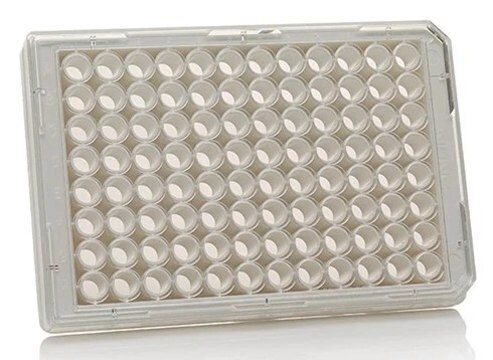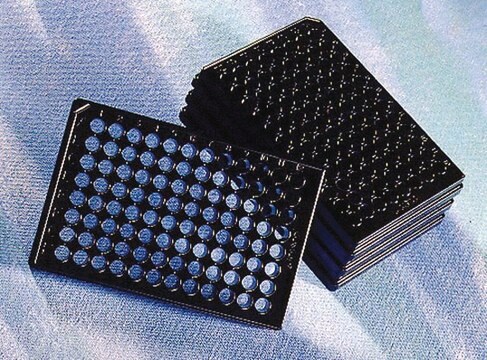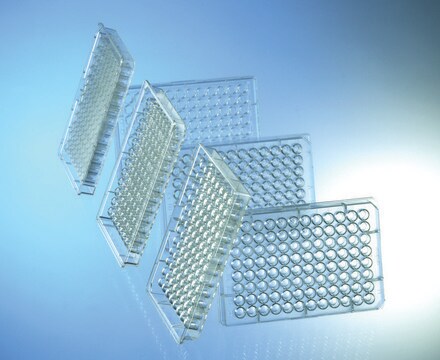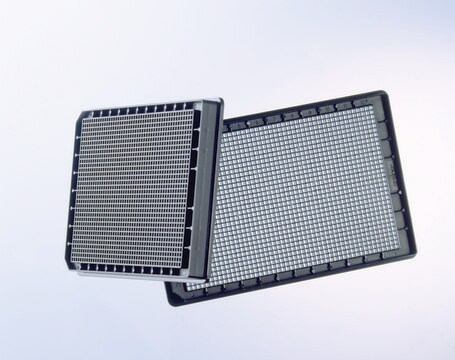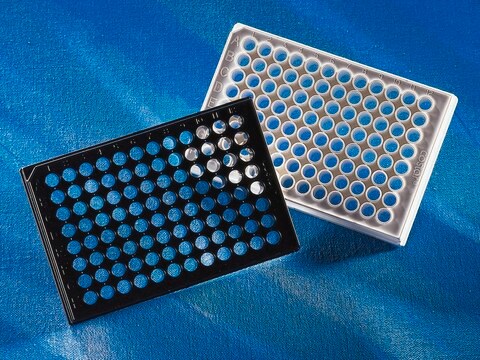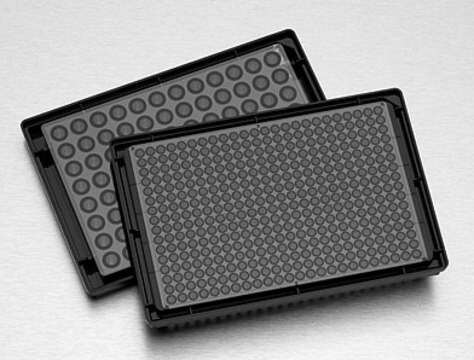CLS3614
Corning® 96 Well Special Optics Microplate
flat bottom clear, black polystyrene, Tissue Culture (TC)-treated surface, bag of 25, sterile
Synonym(s):
96 multiwell plates, 96 well microplates, 96 well microtiter plates, 96 well plates, optically clear flat bottom plates
About This Item
Recommended Products
material
black polystyrene
black/clear bottom polystyrene plate
clear bottom
flat bottom clear
sterility
sterile
feature
lid: no
skirt
plate format: 96 well special optics
packaging
case of 100
bag of 25
manufacturer/tradename
Corning 3614
maximum volume
360 μL
size
96 wells
surface area
0.32 cm2 , cell growth area
cell growth area
cell growth area
working volume
200 μL
suitability
suitable for (optically clear flat well bottom permits direct microscopic viewing)
binding type
Tissue Culture (TC)-treated surface
Looking for similar products? Visit Product Comparison Guide
General description
- Ultra thin, optically clear flat well bottom permits direct microscopic viewing, resulting in lower background fluorescence and enabling readings down to 340nm
- Opaque walls to prevent well-to-well crosstalk
- Can be used for both top and bottom reading instruments
- Flat bottoms with 360μL total volume
- Recommended working volumes of 75 to 200μL
- Sterilized by gamma radiation and certified nonpyrogenic
- Without lids
- Bulk packed 25 per bag
The 96 well special optics plates have black, opaque walls, and ultra thin flat clear bottoms that permit direct microscopic viewing and improved optical performance in fluorescent-based assays.
Legal Information
Certificates of Analysis (COA)
Search for Certificates of Analysis (COA) by entering the products Lot/Batch Number. Lot and Batch Numbers can be found on a product’s label following the words ‘Lot’ or ‘Batch’.
Already Own This Product?
Find documentation for the products that you have recently purchased in the Document Library.
Customers Also Viewed
Our team of scientists has experience in all areas of research including Life Science, Material Science, Chemical Synthesis, Chromatography, Analytical and many others.
Contact Technical Service